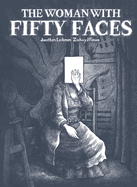
Art historian Jonathan Lackman and painter/musician Zachary J. Pinson gloriously, graphically resurrect an enigmatic artists' muse in The Woman with Fifty Faces: Maria Lani & The Greatest Art Heist That Never Was. Within the first five pages, Lackman provides a concise overview of Lani's life: The German silent film star arrived in Paris in 1928, convinced 50 significant artists--Henri Matisse, Man Ray, Marc Chagall, among them--to immortalize her image, engendering "an exhibition unparalleled in the history of art" that traveled to New York, Chicago, London, and Berlin. Then Lani vanished, prompting even her greatest champion, Jean Cocteau, to dismiss her as a "con artist from Warsaw." That narrative held firm "but it was also wrong. The truth is... even better": an emboldening determination to "try to outlive the bastard [Hitler]" in the wake of terrifying widespread destruction.
Lackman first learned about Lani in 2004: Her remarkable associations, sudden disappearance, the extraordinary exhibition with "more portraits than anyone," prompted him to ask, "Why has her story never been told?" Lackman's two decades of research and Pinson's 5,000 illustrating hours magnificently explore "the biggest mystery in Paris," tracing Lani's Polish birth, the antisemitic violence her family repeatedly escaped, her marriage to (wannabe) filmmaker Max Abramowicz, their peripatetic reinventions and "sleight of hand" machinations. Pinson's visualizations are an utter marvel--black-and-white pen-and-ink drawings, made dense with meticulous hatching. The effect is not unlike scratch art, as if every panel is a chance to uncover and decipher secrets. Together, the complementary duo creates an overdue homage to a brilliantly inventive woman of influence and vision. --Terry Hong

